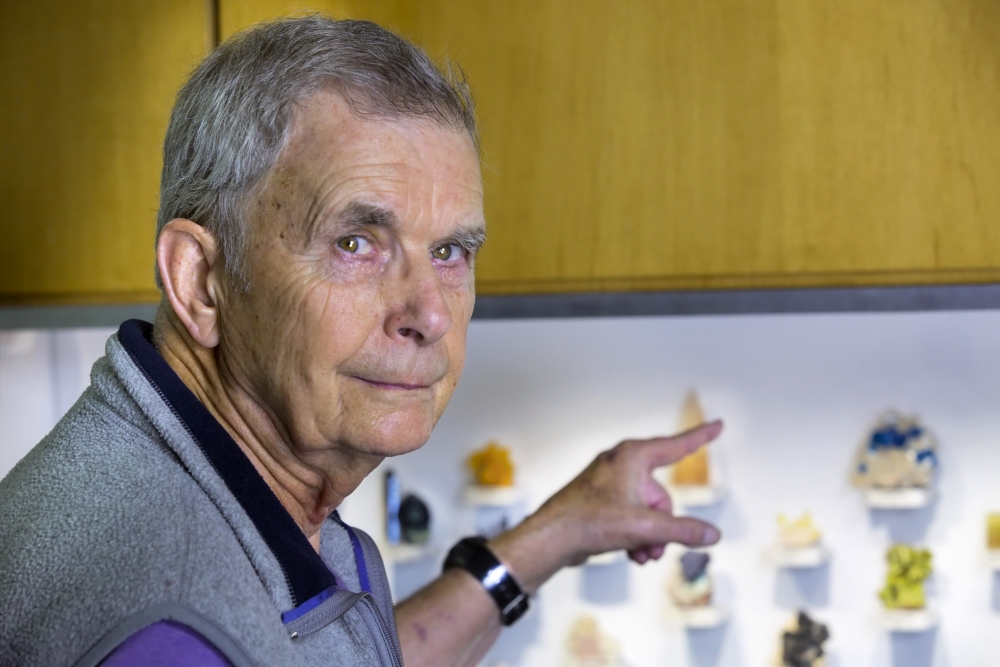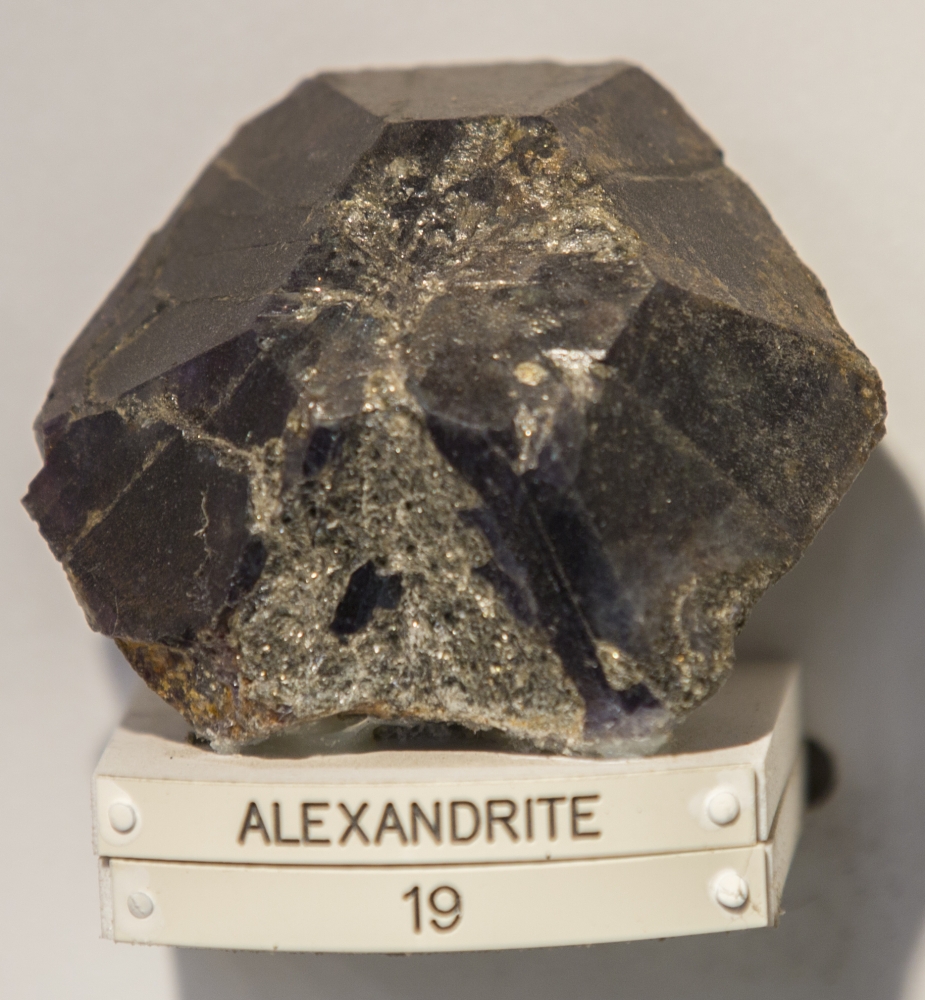A Cut Above the Rest



In an otherwise unassuming two-story building — one of the first erected at UC Santa Barbara in the late 1950s — sits treasures untold: an assemblage of minerals and gem crystals — many quite rare — known as the Bancroft Collection.
The little-known cache of 60 crystals is displayed in an alarmed Lexan case no less — inside Webb Hall, home to UCSB’s Department of Earth Science.
“The Bancrofts wanted the collection to be a focal point for everyone who walks through the foyer, and the beautifully lit case draws people to it,” said mineralogist William Wise, an earth science professor emeritus. “A collection like this is exciting because of the wide variety of colors, shapes and examples of some of the world’s more interesting minerals and gem crystals.”
The collection was donated by Edward R. Bancroft, a teacher and gem cutter whose father, Peter, was an alumnus. Peter and his wife, Virginia, designed the display case and had it built to their specifications on campus.
“Edward chose UCSB as the home for the collection because of our great affection for the university and its faculty, which developed while I was a student at the Riviera campus where Virginia worked,” Peter Bancroft once commented. He held an undergraduate degree in education, which he completed when UC Santa Barbara was a state college.
The elder Bancroft authored two books about gems and minerals, “Gem & Crystal Treasures” and “The World’s Finest Minerals and Crystals,” both of which are available in the library. While the volumes feature a wider variety of minerals and crystals than those in the Bancroft Collection, seeing specimens firsthand is a special treat.
Although the terms minerals and gem crystals are often used interchangeably, they are really one and the same. Gem crystals — minerals transparent enough to be cut into gemstones — sometimes have different names than the minerals themselves. Take tanzanite, the blue-violet variety of the mineral zoisite. Tiffany & Co. chose the name tanzanite after its country of origin in order to market the gem’s rarity, unusual color and singular location. Mineral name, on the other hand, must be approved by an international committee of mineralogists.
When discovered in the Ural Mountains in 1830, alexandrite, a gem variety of chrysoberyl, was named after the future Tsar Alexander II of Russia. The Bancroft specimen is one of about 10 in the world of such a size. Although too flawed to be gem quality, it nonetheless exhibits one of the mineral’s key characteristics: In daylight it appears green, but in artificial light it becomes red.
Pyrite, also known as fool’s gold, is a common mineral. However, the specimen on display in Webb Hall features a rare form: two perfect cubes, one atop the other.
Wise’s favorite is the smoky quartz, which hails from the Gotthard Tunnel in Switzerland. He appreciates its unusual stacked and slightly twisted structure. This type of quartz is also known as a gwindel, from the German “gewunden,” meaning helicoidal or twisted.
Earth science students taking classes in mineralogy are sometimes directed to study the Bancroft Collection. Parents and visitors get a close-up look at the crystals during commencement weekend when a reception for graduates is held in the foyer.
For those interested in learning more about the collection, a comprehensive website provides an overview of each specimen along with a complete set of physical, chemical and geographical information and a photo archive connected to the locale where each mineral was mined.



